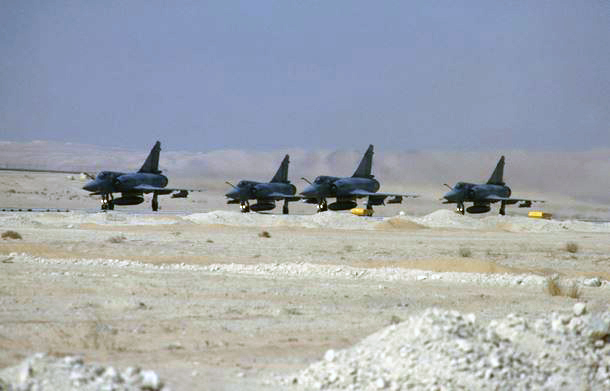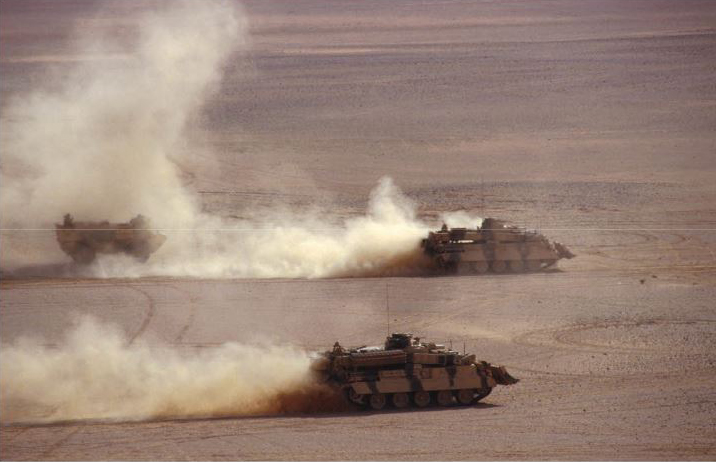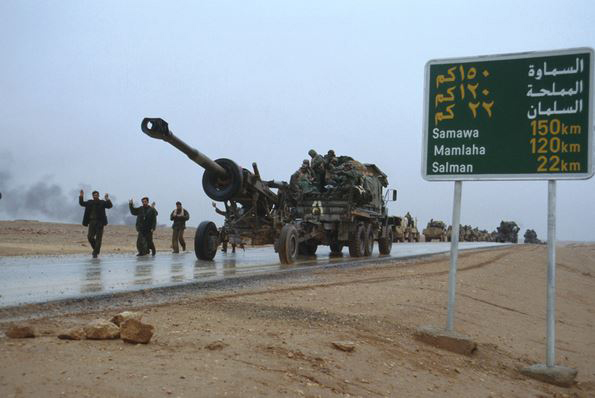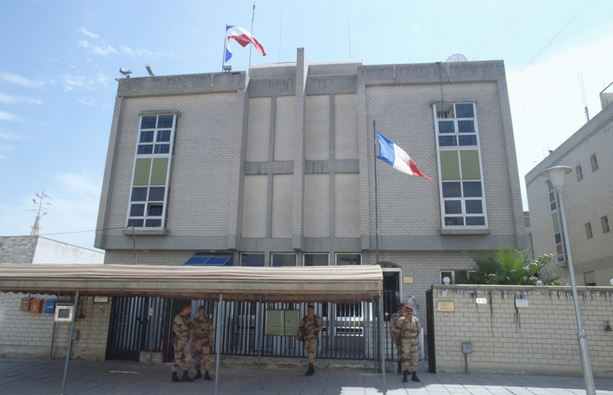Desert Storm and Operation Daguet, twenty years on

The last conflict of the Cold War or the first postmodern war, the operations that led to the liberation of Kuwait, in February 1991, were the result of a long and complex diplomatic process which culminated in a rapid air then land campaign. For France, who contributed a mixed force of nearly 20 000 troops - two-thirds of them from the army - the Gulf War raised the issue of how suitable its defence structure was to the conditions and realities of a changing world.
When Saddam Hussein invaded Kuwait on 2 August 1990, the international community reacted with three UN Security Council resolutions demanding the withdrawal of the Iraqi armed forces. The situation evolved rapidly: on 6 August, in view of the threat posed to its borders by the Iraqi divisions, King Fahd of Saudi Arabia authorised the United States to deploy land forces on its territory. This was the start of Operation Desert Shield, which soon saw a coalition of Western and Arab countries join forces around the US. August went by in attempts at mediation, despite Iraqi provocations (with Westerners being taken hostage and used as human shields), the UN refusing to give up hope of a compromise. The real breakthrough came in early September when the USSR pledged its support for the Americans. Between 14 and 23 September, many embassies in Kuwait City were raided - not least the French one, which led President François Mitterrand to step up French military involvement in the Gulf operations.
In early August, France had increased its presence in the region by reinforcing its naval (Operation Artimon) and air power. Soon, a land engagement became a very real possibility in the event that Kuwait needed to be liberated by force. Operation Daguet was launched, under the orders of General Michel Roquejeoffre, commander of the French army's Rapid Action Force. Made up of partly professional units of the 6th Light Armoured Division, soon reinforced by elements of the 9th Marine Infantry Division, 12 000 troops, 500 armoured vehicles and 132 helicopters were deployed in Saudi Arabia, on the border with Iraq. Things got off to a difficult start, however: the initial choice of an independent French command on the same level as the Americans and Saudis posed a problem, and the French forces had to agree to being under the operational control of the coalition. The French were then assigned the western wing of the formation, around Hafr Al-Batin, incorporated into the US Army's XVIII Airborne Corps.
As the coalition was taking shape, the diplomatic initiatives continued. Blowing hot and cold, Iraq freed some of the Western hostages, but still refused to withdraw from Kuwait. Then, on 29 November 1990, the UN adopted Resolution 678, which presented Iraq with an ultimatum, empowering Member States to use ”all necessary means” if Iraqi forces did not pull out of Kuwait by 15 January 1991..
The first air strikes on Baghdad and key Iraqi sites were carried out on 17 January. The highly publicised air campaign raised the question of the protection of the civilian population, and Saddam Hussein responded in part by bombing Israeli towns. Tension mounted for nearly a month, as statements and recantations from the Iraqi authorities about a possible conditional withdrawal followed sabre-rattling and victorious declarations from the dictator. Finally, on 24 February, the land offensive got under way: within a few hours, Operation Desert Storm swept through the Iraqi divisions, liberated Kuwait City and penetrated into Iraqi territory. The French forces won recognition for destroying the Iraqi 45th Infantry Division, and rapidly seized their target of As-Salman, 150 km into Iraq. There, they were stopped by the ceasefire, as the Iraqi troops left Kuwait, not without causing an environmental disaster in the process, by setting fire to 732 barrels of oil. Twenty years later, as a second war in the Gulf took place, what lessons could be learned from Operation Daguet? The key consequence had to do with the professionalisation of the armed forces and the end of conscription, in response to increasingly distant engagements requiring short notice and a high level of competence. Paradoxically, Iraq also marked the end of a type of conflict, since the 1990s were characterised by a succession of conflicts born of the upheaval resulting from the end of the Cold War, in the Balkans, Middle East and Africa. Meanwhile, the conflict showed France's capacity to integrate in a broad coalition in which it knew where to take its place and, without refusing the contribution of diplomatic dialogue, when the toga must yield to arms.
Guillaume Lasconjarias - Research officer, Institut de Recherche Stratégique de l'École Militaire (IRSEM)
in Les Chemins de la Mémoire no 211/December to January 2011
See also on Educ@Def: Overseas operations

Quatre Mirage 2000 de l'armée de l'air armés de missiles Matra R 550 Magic II s'apprêtent à décoller sur la base aérienne d'Al Ahsa, Arabie saoudite, 25-31 décembre 1990.
©ECPAD/Yann Le Jamtel

Deux engins blindés du Génie du 6e régiment étranger du Génie lancés à vive allure dans le désert d'Arabie saoudite, janvier-février 1991.
©ECPAD/Michel Riehl

Sur l'axe Texas, un camion américain tractant un obusier de 155 mm M-198 croise des soldats irakiens qui se rendent, Irak, février 1991.
©ECPAD/Michel Riehl


